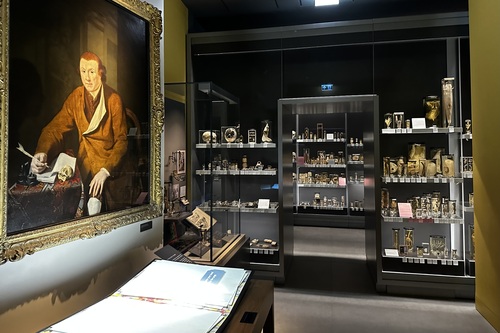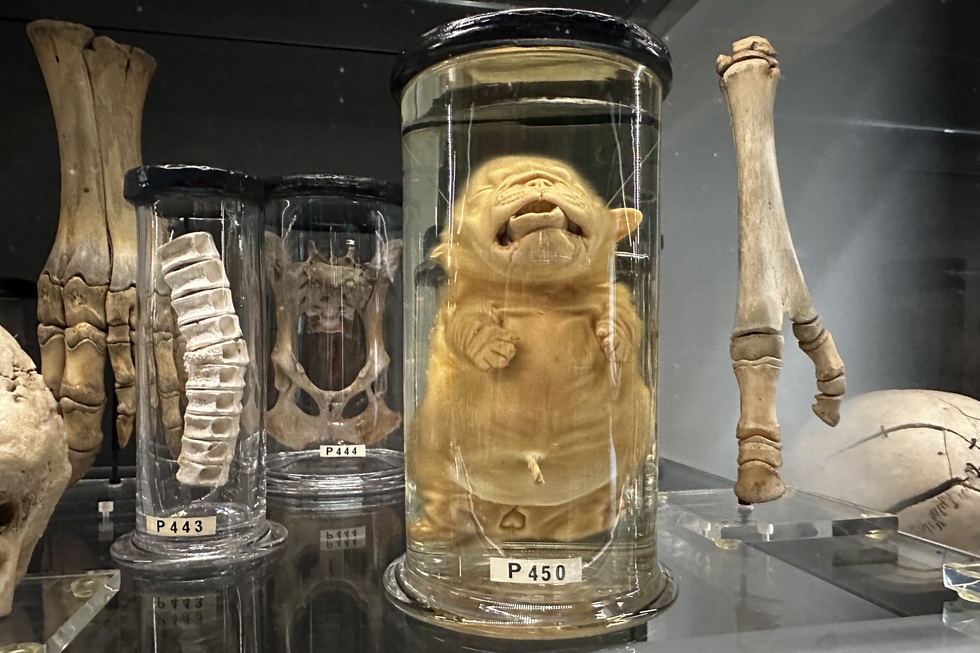If you lived in 18th-century London and something went wrong with your body, after you died a famous scientist named John Hunter might show up to rummage through your corpse, snip out the afflicted organ, and sink it in a jar of preservative so that budding physicians could learn from the specimen.
Back in those days, every scientist was like a mad scientist. We had so much yet to learn about anatomy—even a toothache could snowball into a death sentence—but few socially acceptable ways to dissect bodies to advance evidence-based education.
In that climate, the Scotland-born John Hunter (1728–93) became one of the Western world's foremost explorers of pathology and anatomy. Through his ghoulish diagnoses that could only be made on cadavers after death, he acquired fame, respect, and a townhouse at 28 Leicester Square where he entertained the cream of progressive society.
Hunter's pioneering research was made possible in part by patients who bequeathed their mortal remains to the surgeon's analytic eye. But he also acquired scores of bodies through the black market of grave-robbing.
Over his lifetime, which coincided with the separation of the American colonies from the British crown, Hunter amassed thousands of specimens from the animal and human worlds, which he carefully labeled and stored in glass jars.
Hunter's vast, macabre collection, opening a multitude of windows into troubled lives from the 1700s, forms the core of the refreshed and underrated Hunterian Museum. After a 7-year hiatus, the institution reopened in May 2023 in central London.
Abscesses and improperly healed bones, extinct animals and natural curiosities, tumors and hemorrhoids, things mottled by untreated syphilis—thousands of past incurables now appear ghostly and blanched in black-lidded cylinders. The exhibits are as much a chronicle of biology gone wrong as a compendium of disorders we might now consider minor but which ran rampant and could cause serious damage before our time.
Ghastly, perhaps, but each jar is a testament to an unlucky soul who went through misery so we don't have to.
Since Hunter's own death his collection has been on display in a free museum that just emerged from a £4.6 million (US$5.8 million) renovation designed to streamline the space from a two-level warehouse of weirdness to a single-level, professionally presented timeline of medical exploration.

Some of the most obvious changes to the collection, located on the ground floor of the Royal College of Surgeons of England on the south side of Lincoln's Inn Fields, have to do with propriety.
As visitors first enter, they are gently advised to remember and respect that many of the specimens on view came from actual human beings with names and feelings. Descriptive signs beside jugs of ancient tissue supply hints of the mortal desperation patients must have felt when they came to Dr. Hunter in search of help with their ailments.
Now, the body parts that took these people down are all that's left, filling glass cabinets to make an inert menagerie of failed health.
The offerings aren't easy on hypochondriacal types, but at the same time you'll feel grateful for how far medical education has advanced.
The increased sensitivity with which curators have approached the collection is a change from the previous version of the Hunterian.
In that iteration of the museum, one of the most disturbing displays (and that's really saying something here) centered on 7-foot, 7-inch Charles Byrne, who heard that Hunter was itching to get his hands on the uncommonly tall man's corpse after he died. Alarmed, Byrne arranged to have a burial at sea in a lead-lined coffin following his passing in 1783.
To no avail—Hunter bribed fishermen to fetch the casket from the deep, and the poor man’s skeleton was put on show for the better part of two centuries. Such was the game of science back then, when anatomists and surgeons depended on grave robbers and felt justified in disregarding the dignity and even the express wishes of the deceased.
Finally bending to modern sensibilities, the new version of the museum has removed Byrne's remains from public display.
But there's still plenty to see.
Look for segments of the bones of George Grenville, the British prime minister who inflicted the Stamp Act and the Quartering Act on the American colonies, thereby helping to ignite a revolution and, later, to necessitate the Third Amendment to the U.S. Constitution. Grenville's skeletal pieces present fearful evidence of the multiple myeloma that killed him at age 58 in 1770, 8 months after the Boston Massacre. Those specimens can be found among remains arranged by malady, not by person, and shelved among mostly anonymous samples.
Once Hunter's specimens (and possibly you) are exhausted, the timeline at the museum shifts toward the present, tracking the progress of surgical techniques from the crude butchering devices of Hunter's era to more recent high-tech innovations such as artificial organs and outpatient laparoscopy.
Although two-thirds of Hunter's original collection was smashed in World War II bombing raids, some 3,500 items remain, of which about 2,000 are currently on display. In addition to Byrne's skeleton, other items that played up a certain Barnum-esque sensationalism have likewise been shelved.
In the madeover museum, for instance, you won't see the ill-conceived amputation buzz saw that horrified visitors at the old Hunterian. During the saw's first use, it became slick with blood, slipped, and lopped off a nurse’s hand. Both patient and nurse were killed by subsequent infection.
In keeping with the revised Hunterian's heightened sense of decorum worthy of a scientific field, that artifact has been put in storage.
The new Hunterian also used its dormancy to add modern interactive museum displays and to document digitally every surviving item in the collection. That virtual repository can be searched and inspected online, but there's nothing like surrounding yourself with cases of the actual organs on the premises of this absorbing museum. Many of us owe our survival to the medical foundation built on these artifacts of research.
Sometimes the march of science leads us through queasy scenery. But if it's a sense of ghoulish fascination that brings many tourists to the museum, the new Hunterian aims to excise that prurient impulse with surgical precision.

The Hunterian Museum is located at the Royal College of Surgeons of England at 35-43 Lincoln’s Inn Fields, just east of the Covent Garden area in central London. Tickets are free, but advance reservations are suggested; they can be made at HunterianMuseum.org. The museum is open Tues–Sat from 10am to 5pm and takes about an hour to visit. Tube: Holborn







